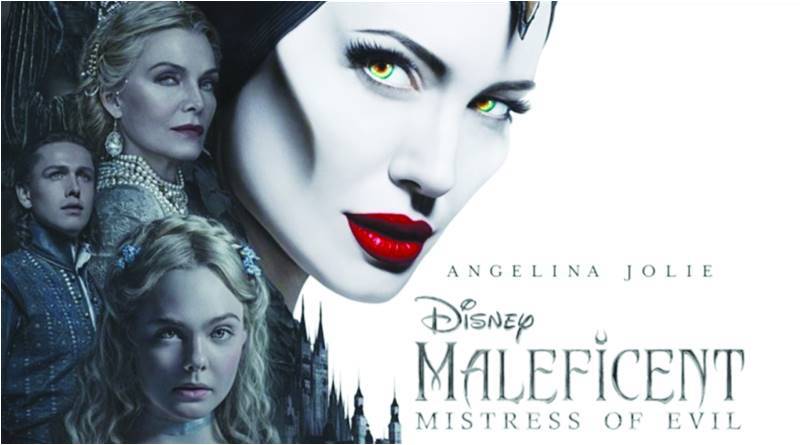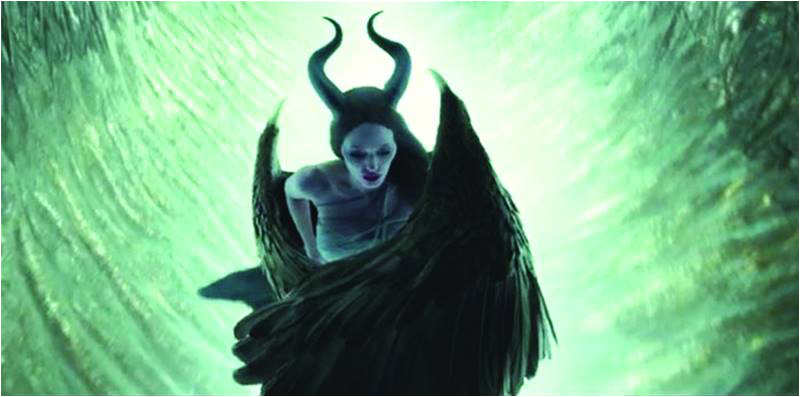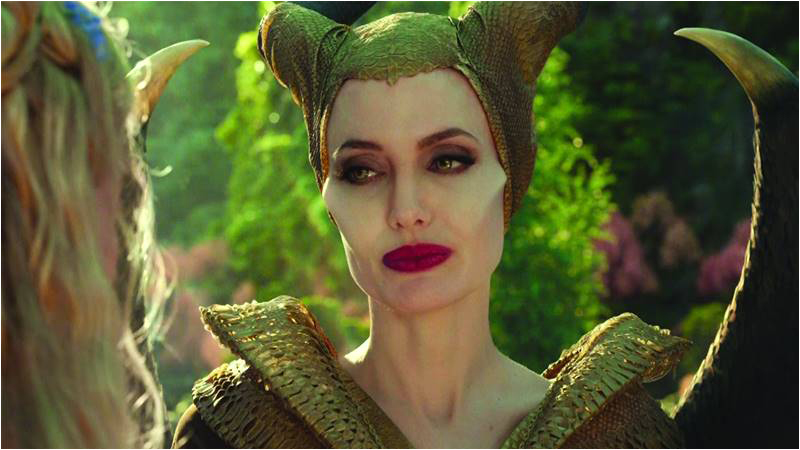
Sequels can be hard to nail. That much we’ve learnt from ages of failures of varying scale, even by the biggest Hollywood banners, a prominent example of which was reviewed last week in the shape of It: Chapter II.
Seemingly, the art of retaining what the audiences liked about the prequel while offering something sufficiently new to sustainably pique their interest is one that remains hard to master. Maleficent is its latest prey.
Five years after the film based on the antagonist of Disney classic Sleeping Beauty was released to worldwide success, its sequel Maleficent: Mistress of Evil didn’t quite manage to attract interest even on its opening weekend.
The $36 million opening on the weekend of the 18th of October generated little over a sixth of the basic production cost of the film. Soon after, the film began to muster almost universal mixed reviews across the board.
Perhaps the biggest drawback for the viewers of the film was the sheer lack of evil in a film billed on, and entitled with, it. Turns out, the only evil in Maleficent: Mistress of Evil is the abovementioned adversary that the follow-up to a successful movie is.

A large chunk of Maleficent’s success owed itself to the fact that unlike many frame-to-frame remakes of old classics – animated or otherwise – the film depicted the storyline from a contrasting viewpoint, in turn adding to the universe that the original had created. However, in Mistress of Evil that very tangent that Maleficient had taken seems to diverge from the core of the plot to such an extent that it is hard to relate it to Sleeping Beauty itself.
In fact, the film’s making conveys from the onset that it is going to explore the dimensions of Maleficient that aren’t bound to the storyline in which the character was created. That could’ve sold well with the audience that became familiar with Sleeping Beauty through Maleficent – and not the other way around – but it still required a much better storyline to keep the viewers engaged.
Princess Aurora (Elle Fanning) is the reigning Queen of The Moors and is engaged to Prince Phillip (Harris Dickinson). Aurora hopes that she’d be able to unite the fairy and human kingdoms with her marriage to Prince Phillip.

That plan hits a stumbling block in the shape of Maleficent (Angelina Jolie) clashing with Phillip’s mother Queen Ingrith (Michelle Pfeiffer). What follows is personality clashes evolving into an inter-species war between kingdoms that are simultaneously being pushed away and pulled together.
Without revealing too much of the plot, one can safely say that the storyline itself is hardly the greatest selling point of Mistress of Evil. Clearly, the film’s highlights belong to the visual department, with costumes, makeup and overall cinematography being absolutely top-drawer.
Another self-evident strength of the film is the acting prowess. Jolie aces as expected, and is backed with formidable performances from Fanning and Pfeiffer as well.
However, again, where the film is likely to alienate the audience is the screenplay and script which is too densely woven with themes that one wouldn’t necessarily affiliate with the franchise – most definitely not with Sleeping Beauty.
In that sense, again, Mistress of Evil is likely to enjoy following among the fans of Maleficent more so than the fans of Sleeping Beauty. Therefore, how one finds Mistress of Evil is likely to be determined by how one approaches the franchise to begin with.
For the oldies, or suckers for nostalgia, perhaps Maleficent should’ve been the end of the foray into the character. For others, Sleeping Beauty might be known as the predated offshoot of Maleficent – and not the other way around.
Seemingly, the art of retaining what the audiences liked about the prequel while offering something sufficiently new to sustainably pique their interest is one that remains hard to master. Maleficent is its latest prey.
Five years after the film based on the antagonist of Disney classic Sleeping Beauty was released to worldwide success, its sequel Maleficent: Mistress of Evil didn’t quite manage to attract interest even on its opening weekend.
The $36 million opening on the weekend of the 18th of October generated little over a sixth of the basic production cost of the film. Soon after, the film began to muster almost universal mixed reviews across the board.
Perhaps the biggest drawback for the viewers of the film was the sheer lack of evil in a film billed on, and entitled with, it. Turns out, the only evil in Maleficent: Mistress of Evil is the abovementioned adversary that the follow-up to a successful movie is.

A large chunk of Maleficent’s success owed itself to the fact that unlike many frame-to-frame remakes of old classics – animated or otherwise – the film depicted the storyline from a contrasting viewpoint, in turn adding to the universe that the original had created. However, in Mistress of Evil that very tangent that Maleficient had taken seems to diverge from the core of the plot to such an extent that it is hard to relate it to Sleeping Beauty itself.
In fact, the film’s making conveys from the onset that it is going to explore the dimensions of Maleficient that aren’t bound to the storyline in which the character was created. That could’ve sold well with the audience that became familiar with Sleeping Beauty through Maleficent – and not the other way around – but it still required a much better storyline to keep the viewers engaged.
Princess Aurora (Elle Fanning) is the reigning Queen of The Moors and is engaged to Prince Phillip (Harris Dickinson). Aurora hopes that she’d be able to unite the fairy and human kingdoms with her marriage to Prince Phillip.

That plan hits a stumbling block in the shape of Maleficent (Angelina Jolie) clashing with Phillip’s mother Queen Ingrith (Michelle Pfeiffer). What follows is personality clashes evolving into an inter-species war between kingdoms that are simultaneously being pushed away and pulled together.
Without revealing too much of the plot, one can safely say that the storyline itself is hardly the greatest selling point of Mistress of Evil. Clearly, the film’s highlights belong to the visual department, with costumes, makeup and overall cinematography being absolutely top-drawer.
Another self-evident strength of the film is the acting prowess. Jolie aces as expected, and is backed with formidable performances from Fanning and Pfeiffer as well.
However, again, where the film is likely to alienate the audience is the screenplay and script which is too densely woven with themes that one wouldn’t necessarily affiliate with the franchise – most definitely not with Sleeping Beauty.
In that sense, again, Mistress of Evil is likely to enjoy following among the fans of Maleficent more so than the fans of Sleeping Beauty. Therefore, how one finds Mistress of Evil is likely to be determined by how one approaches the franchise to begin with.
For the oldies, or suckers for nostalgia, perhaps Maleficent should’ve been the end of the foray into the character. For others, Sleeping Beauty might be known as the predated offshoot of Maleficent – and not the other way around.

